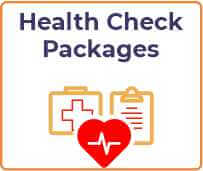What is the Sickling Test?
The Sickling test, also known as Sickle Cell Test, is a diagnostic blood test to diagnose sickle cell disease. Sickle cell disease or sickle cell anaemia is a blood disorder that causes red blood cells (RBCs) to become disfigured. Sickle cell disease also causes RBCs to break down or disintegrate prematurely. This causes a decline in haemoglobin levels, and hence, a sickling test is important to identify this condition early on so that treatment can begin as soon as possible. Moreover, this test is minimally invasive since it requires just a blood sample that is drawn using a thin needle and syringe.
Frequently Asked Questions:
What is the sickling test for?
A sickling test has no side effects and is used to detect the presence of deformed red blood cells (known as sickle cells), which are usually in a crescent shape instead of the regular concave shape. Once an RBC changes abruptly into a sickle cell, it loses its capacity to carry oxygen.
How to understand the test results of the sickling test?
The results of a sickling test can come out to be either positive or negative. This test looks for Haemoglobin S, a component of your blood that causes sickle cell disease. If your test results have come out negative, it means you do not have the Haemoglobin S and vice versa.
Which chemical is used in the sickling test?
When you opt for a sickling test, a doctor or nurse draws a blood sample from you and runs diagnostic tests on it at the lab. In the lab, a chemical known as sodium metabisulphite is mixed with the blood, which helps to quickly identify if there are any sickle cells in your blood.
What happens during the sickling test?
During a sickling test, a doctor, nurse, or any other trained medical professional withdraws a certain amount of blood from a vein in your arm. This procedure can cause slight momentary pain. Once the blood has been taken, this sample is sent to the diagnostic lab. A trained technician observes your blood sample at the lab and looks for deformed RBCs (or sickle cells).
How do I check my sickling status?
To check your sickling status, you will have to get a sickling test done. This test uses the high-performance liquid chromatography (HPLC) method to screen your blood sample for sickle cells. While this test helps identify the type of hemoglobin present in your blood, a follow-up genetic test may be needed to confirm sickle cell disease.
Which test would be abnormal for sickle cell disease?
If your test result has come out positive, this means it is an abnormal result for a sickling test. This means that you have deformed RBCs or sickle cells and the Haemoglobin S in your blood which is responsible for creating these sickle cells. A negative result is considered normal for a sickling test.
What is a positive sickle cell test?
If your sickling test result is positive, then the test has detected the presence of Haemoglobin S (also known as sickling haemoglobin) in your blood sample. This is the first stage of screening for sickle cell anaemia, and a positive result means you should begin treatment for anaemia as soon as possible.
What does sickling mean?
Red blood cells (RBCs) are mostly made up of haemoglobin, and when this haemoglobin clumps to one end of the cell, the RBC loses its concave disc shape and becomes crescent-shaped. This process is known as sickling and can severely hamper the RBC’s capacity to carry oxygen. It also causes the RBC to disintegrate prematurely.
What is abnormal in a sickle cell?
A sickle cell contains an abnormal type of haemoglobin known as Haemoglobin S or Sickle Haemoglobin. If you have sickle cell disease, you have most likely inherited two Haemoglobin S-producing genes, one from each of your parents. This can lead to anaemia (reduced healthy haemoglobin and RBC count), and you may need regular blood transfusions.
What are the types of sickling?
There are seven types of sickling:
- Haemoglobin SS disease
- Haemoglobin SC disease
- Haemoglobin SB+ (beta) thalassemia
- Haemoglobin SB 0 (Beta-zero) thalassemia
- Haemoglobin SD
- Haemoglobin SE
- Haemoglobin SO
The last three types are more uncommon than the rest but can be identified with the help of a sickling test.
Identify the problem early via a simple lab blood test and get the treatment as early as possible. Book an appointment now to get a sickling test done at the earliest or consult a specialist for a free second opinion.
Why Choose Yashoda Hospitals
Yashoda Hospitals is committed to providing world-class treatment for patients from across the globe. With the unique combination of state-of-the-art technology, intuitive care, and clinical excellence, we are the healthcare destination for thousands of international patients in India.

On the journey to good health, we understand that it is important for you to feel at home. We plan out all aspects of your trip.

Experienced specialists perform non-invasive and minimally invasive surgeries to provide the best treatment for international patients.

Our hospitals are equipped with advanced technology to perform a wide range of procedures and treatments.

We deliver excellence by delivering quick and efficient healthcare and through pioneering research that helps all our future.patients.










